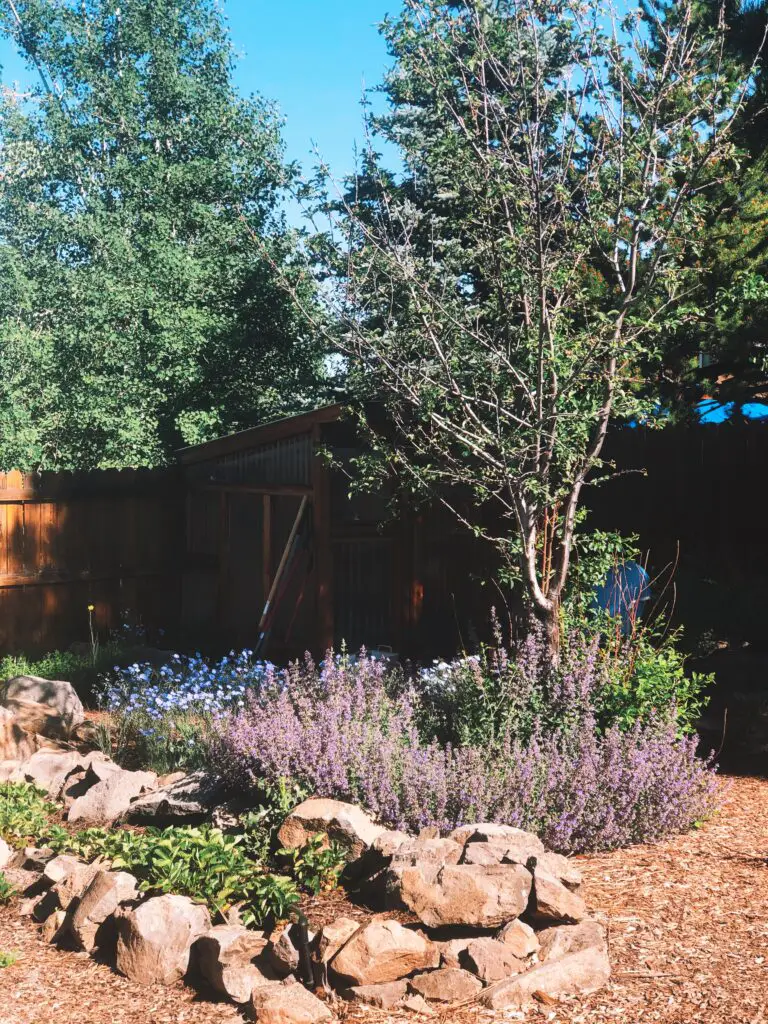Wildflowers bring an informal charm and natural grace to a yard, so I think it’s time to talk about how to add a wildflower garden to your farmhouse outdoor space! A farmhouse nestled in a meadow of wildflowers is nothing short of idyllic! But knowing when to plant wildflower seeds is crucial to creating this pretty display.
With their unfussy habit and beautiful colors, wildflowers are irresistible. Their biggest draw is their ability to attract and support pollinators, such as bees and butterflies, which are delightful to have around in summer.
Today I’ve put together a guide, so you have everything you need to know about peak planting and sowing times for wildflowers, whether you’re creating a mini meadow or designing a flower bed.
Spring and fall are generally the best times to direct sow and plant annual and perennial wildflower seeds. Biennials (such as foxgloves) can be sown in summer, but so-called wildflowers are often not native, which means they may need to be sown under cover or at different times.

Contents
Annual Wildflower Garden
Annuals are flowers that only live for one season and then die, not to return the following season. If you want to feel out whether or not you like the look of a wildflower garden, then planting annuals would be the way to go. Seed companies sell native and non-native wildflower mixes consisting of easy-to-grow seeds in various colors. My favorite online source is Wildseed Farms, but your local nursery is sure to carry the varieties that do best in your area.
A mini meadow is a great way to create a wildlife habitat. A mini meadow should have a more wild feel, and an almost untamed appearance. If you have a dirt patch in your yard, then this would be the ideal location to try out a mini meadow. If you end up loving the way it looks, you can extend it further into your yard.
Perennial Wildflower Garden or Mini Meadow

No matter where you live, you should sow in the spring or fall, depending on your climate. In a cool, temperate climate (such as the northern U.S. spring sowing is best. In warm climates (including zones 7 to 11), a fall sowing is preferred, as the temperature allows the plants to establish a sound root system at that time (and since perennials – unlike annuals – are permanent, this is important!)
Again, start small. Identify an area on your property that doesn’t see a lot of traffic, maybe designate it as a “no-mow” area and start adding plants like echinacea and bee balm. Also, find out what native pollinator flowers are in your area.
My Three Favorite Wildflowers to Grow in a Mini Meadow

Echinacea
The purple coneflower (Echinacea purpurea) looks nice in the middle or back of the border and creates a relaxed prairie mood. The plant is home to many pollinators; it has a long history of Native medicinal uses, and, of course, it is gorgeous. It can be used dried as an herbal tea to help boost immunity to colds and other viruses.
Milkweed
Asclepias syriaca, a milkweed native to the eastern United States and southern Canada, is a favorite of butterflies.
Milkweed blooms late in the summer, just in time for the Monarch butterfly migration. Its flowers and leaves provide food, shelter, and protection for the butterflies. Milkweed thrives in habitats that have been drastically reduced by urbanization, so any effort to create those conditions in our yards and gardens will help the monarch population.
Sow directly into soil outside in fall or early winter. Alternatively, sow them in containers in a refrigerator before moving them to a greenhouse or sunny windowsill in spring.
Since milkweed is native to the northeast, it needs to be “cold-stratified” – in other words, for the seeds to grow, they must be exposed to cold and moist conditions.
Bee Balm
In summer, monarda (also known as bee balm or bergamot) produces pink or red pink-hair flowers, which attract pollinators. Several species grow in the U.S., including the widely grown M. fistulosa and lemon-scented M. citriodora, along with the exotic-looking M. punctata.
Sow M. fistulosa under cover in spring or sow direct outside in late summer or early fall; sow M. citriodora under cover in spring or sow direct outside from mid-spring to late summer; and sow M. punctata under cover in March or April or sow outside in fall.
Do you have any tips on creating a wildflower garden? Please share in the comments below!


